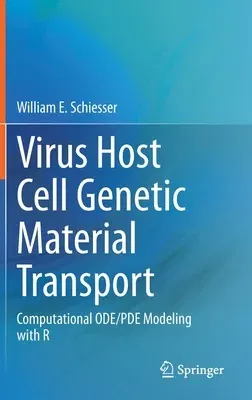The reproduction and spread of a virus during an epidemic proceeds when
the virus attaches to a host cell and viral genetic material (VGM)
(protein, DNA, RNA) enters the cell, then replicates, and perhaps
mutates, in the cell. The movement of the VGM across the host cell outer
membrane and within the host cell is a spatiotemporal dynamic process
that is modeled in this book as a system of ordinary and partial
differential equations (ODE/PDEs).
The movement of the virus proteins through the cell membrane is modeled
as a diffusion process expressed by the diffusion PDE (Fick's second
law). Within the cell, the time variation of the VGM is modeled as ODEs.
The evolution of the dependent variables is computed by the numerical
integration of the ODE/PDEs starting from zero initial conditions (ICs).
The departure of the dependent variables from zero is in response to the
virus protein concentration at the outer membrane surface (the point at
which the virus binds to the host cell).
The numerical integration of the ODE/PDEs is performed with routines
coded (programmed) in R, a quality, open-source scientific computing
system that is readily available from the Internet. Formal mathematics
is minimized, e.g., no theorems and proofs. Rather, the presentation is
through detailed examples that the reader/researcher/analyst can execute
on modest computers. The ODE/PDE dependent variables are displayed
graphically with basic R plotting utilities.
The R routines are available from a download link so that the example
models can be executed without having to first study numerical methods
and computer coding. The routines can then be applied to variations and
extensions of the ODE/PDE model, such as changes in the parameters and
the form of the model equations.

